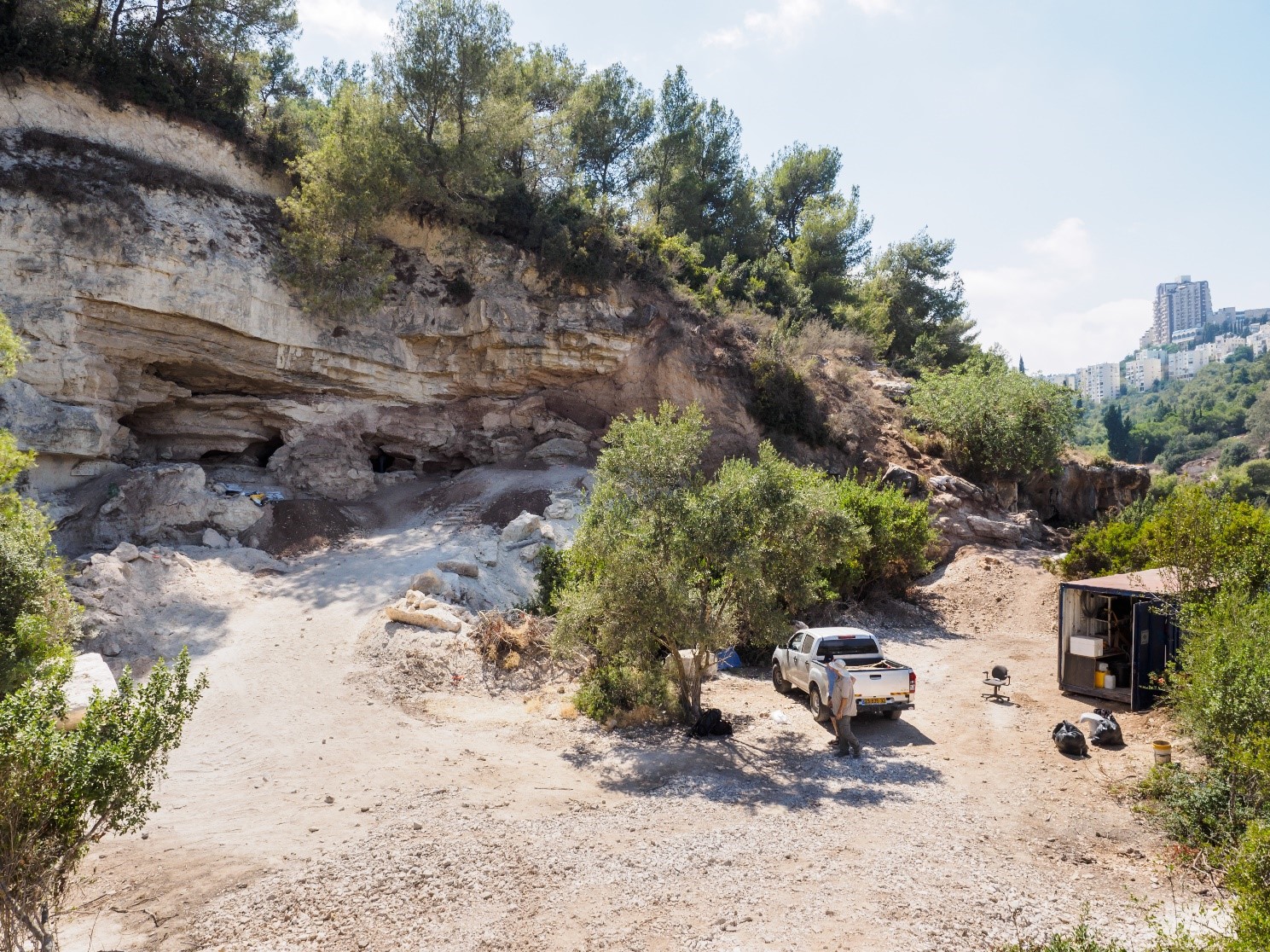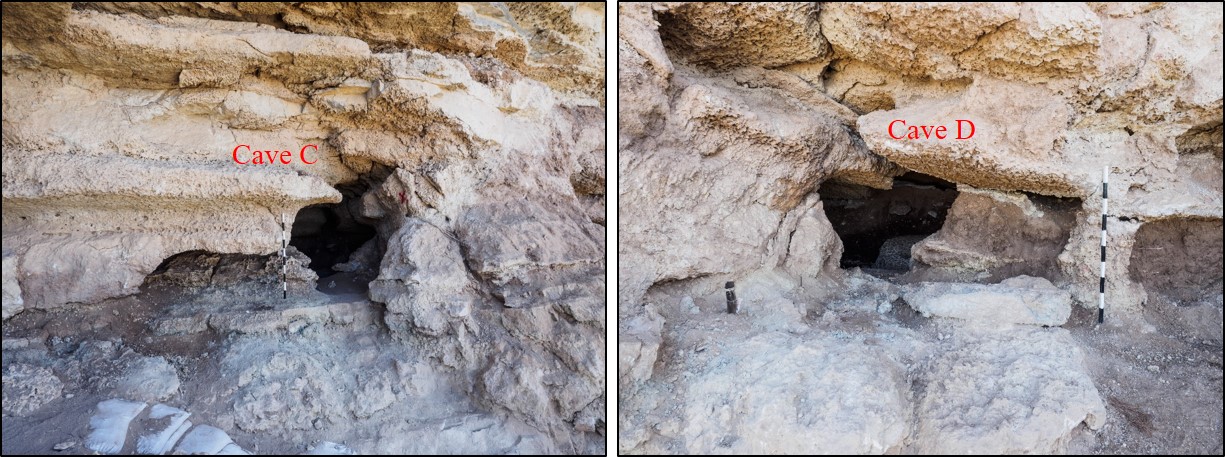Geula Caves
In collaboration with Omry Barzilai1
1 Excavations, Survey & Research Department, Israel Antiquities Authority, PO Box 586, Jerusalem 91004, Israel
The Geula Caves are located at the foothills of the Vardiya district in Haifa, approximately 15 m above Nahal Tan, which is a tributary of Nahal Giborim (Wadi Rushmiya). The Geula Caves are, in fact, the remains of a larger cave system, which was partially destroyed by quarrying activities during the British Mandate.

The caves were excavated by E. Wrechener during 1958-1964 (Wrechener 1967). Prehistoric finds were recovered only from Cave B. The excavation at the cave revealed three archaeological layers in a limited area of ca. 50 m2. All layers were rich in finds and included large amounts of faunal remains, flint artifacts in fresh condition, and three human bones. All layers were ascribed to the Mousterian culture of the Middle Paleolithic period (250-50,000 years ago).

A photograph of Geula Caves from the 1960's after Wreschener, 1967

Cave C and D entrances, looking northwest
The Chimney
The chimney is evident on the cliff section north of Caves B-D. It is all filled with compacted reddish brown sediments containing small pebbles (Fig 9). Stratigraphically, this sediment is overlaying and sealing the entrance to Cave D. Therefore, all archaeological finds in Cave D are older than the accumulation of the sediments in the chimney.
The current excavation in Geula Caves was concentrated in three main areas. The first is the cave’s C-D complex, which seems to be a part of a larger complex that also includes Wreschener's Cave B. It seems that the human activity within this complex should be ascribed to the oldest stratigraphic layer (Layer 3), due to the presence of burnt animal bones and flint artifacts. The following stratigraphic stage (Layer 2) showed a great representation of carnivore activity on the bones, most of them associated with the spotted hyena, a species that is now considered extinct in this region. The youngest layer (1) indicated mostly porcupine activity, through the gnawing marks identified on the bones from this layer.
The second area of focus was the chimney complex, which seems to represent the last stage of accumulation in the cave. The excavation in this area indicated the infiltration of sediments from outside the cave through the chimney and into the inner chamber, which sealed the entrance to Cave D. The finds yielded from the chimney included a few animal bones and Mousterian flint artifacts. Those, alongside the compact nature of the sediments, imply that the chimney was sealed in ancient time, maybe not long after the end of the Middle Palaeolithic period.
The third area of focus is the brecciated layer, which is considered to represent a floor of an additional cave, which was not preserved, probably because of natural processes rather than quarrying activity. The thickness of this layer, ca 2 m, indicates a long period of human presence in this cave during the Middle Palaeolithic. The large boulders, found on top of the brecciated layer, and the fact that this layer reaches stone walls at its western part, further indicate the past existence of an additional cave in the Geula Caves complex.
The Geula Caves complex is the only complex of its kind known today on the northern slopes of Mt. Carmel. Most of the known cave sites dated to this period in the region (i.e Tabun, Misliya, Kebara, Sefunim) are at lower elevations, on the western slopes of Mt. Carmel. Future research will include a cultural and chronological analysis of the Mousterian culture in Geula Caves, its correlation with other contemporary cave sites in the region, and a paleo environment reconstruction based on the fauna assemblage. All should contribute a lot to the current research of the Mousterian culture and of human activity in this region during the Middle Palaeolithic period.

